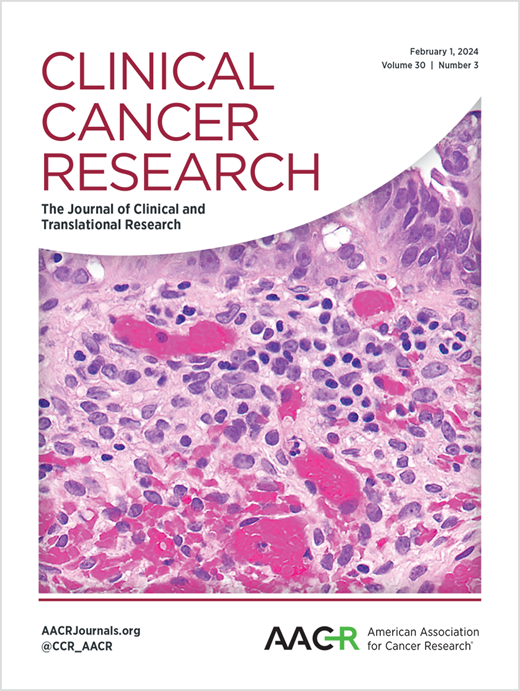MRI-based mathematical modeling to predict the response of I-SPY 2 breast cancer patients to neoadjuvant therapy
IF 10.2
1区 医学
Q1 ONCOLOGY
引用次数: 0
Abstract
Purpose: We seek to establish the generalizability of our biology-based mathematical model in accurately predicting the response of locally advanced breast cancer (LABC) patients to neoadjuvant therapy (NAT). Patients and Methods: 91 patients (representing three subtypes of LABC) from 10 I-SPY 2 clinical trial sites received quantitative MRI before (V1), three weeks into (V2), and after completion of (V3) the first 12-week standard-of-care or experimental NAT course. We used these data to calibrate, on a patient-specific basis, our previously developed biology-based mathematical model describing the spatiotemporal change in the number of tumor cells. After calibrating the mathematical model to the V1 and V2 MRI data, the calibrated model predicted the patient-specific tumor status at V3 by explicitly accounting for tumor cell movement (constrained by the mechanical properties of the surrounding tissue), proliferation, and death due to treatment. Results: The concordance correlation coefficient between the observed and predicted tumor change from V1 to V3 was 0.94 for total cellularity and 0.91 for volume. A logistic regression model of predicted tumor volume metrics from V1 to V3 differentiated pCR from non-pCR patients with an area under the receiver operating characteristic curve of 0.78. Conclusions: Our tumor forecasting pipeline can accurately predict tumor status after an NAT course—on a patient-specific basis, without a training dataset—using “real-world” MRI data obtained from a multi-subtype, multi-site clinical trial.基于mri的数学模型预测I-SPY 2乳腺癌患者对新辅助治疗的反应
目的:我们试图建立基于生物学的数学模型,以准确预测局部晚期乳腺癌(LABC)患者对新辅助治疗(NAT)的反应。患者和方法:来自10个I-SPY 2临床试验点的91例患者(代表三种LABC亚型)在第一个12周的标准治疗或实验性NAT课程(V1)前、(V2)前三周和(V3)完成后接受了定量MRI。我们使用这些数据来校准,在患者特异性的基础上,我们之前开发的基于生物学的数学模型描述了肿瘤细胞数量的时空变化。将数学模型与V1和V2 MRI数据校准后,通过明确考虑肿瘤细胞的运动(受周围组织力学特性的约束)、增殖和治疗导致的死亡,校准模型预测了V3处患者特异性肿瘤的状态。结果:观察到的与预测的肿瘤从V1到V3的一致性相关系数为总细胞数0.94,体积0.91。从V1到V3的预测肿瘤体积指标的逻辑回归模型将pCR患者与非pCR患者区分开来,接受者工作特征曲线下面积为0.78。结论:我们的肿瘤预测管道可以准确预测NAT疗程后的肿瘤状态——基于患者特异性,无需训练数据——使用从多亚型、多部位临床试验中获得的“真实世界”MRI数据。
本文章由计算机程序翻译,如有差异,请以英文原文为准。
求助全文
约1分钟内获得全文
求助全文
来源期刊

Clinical Cancer Research
医学-肿瘤学
CiteScore
20.10
自引率
1.70%
发文量
1207
审稿时长
2.1 months
期刊介绍:
Clinical Cancer Research is a journal focusing on groundbreaking research in cancer, specifically in the areas where the laboratory and the clinic intersect. Our primary interest lies in clinical trials that investigate novel treatments, accompanied by research on pharmacology, molecular alterations, and biomarkers that can predict response or resistance to these treatments. Furthermore, we prioritize laboratory and animal studies that explore new drugs and targeted agents with the potential to advance to clinical trials. We also encourage research on targetable mechanisms of cancer development, progression, and metastasis.
 求助内容:
求助内容: 应助结果提醒方式:
应助结果提醒方式:


